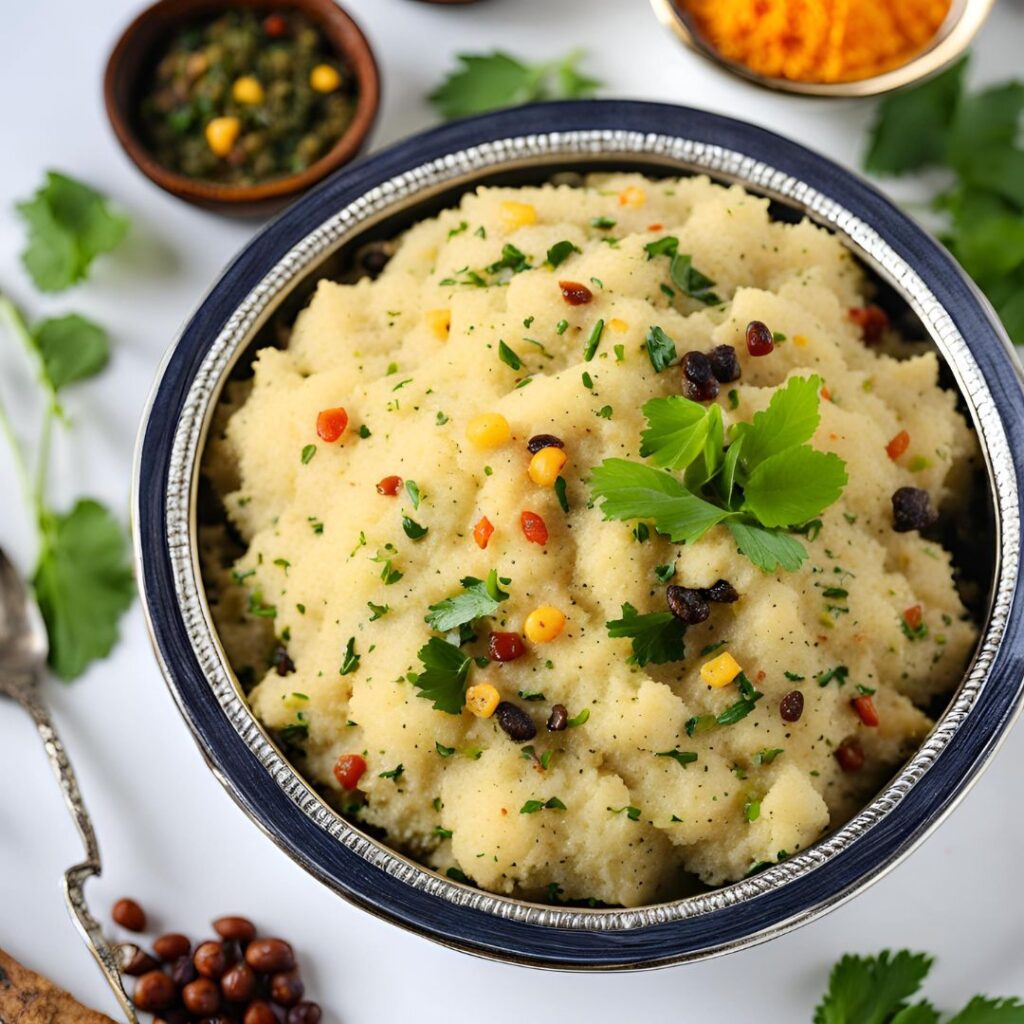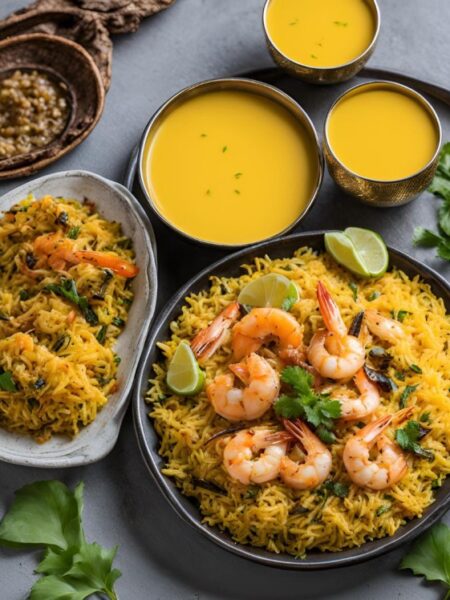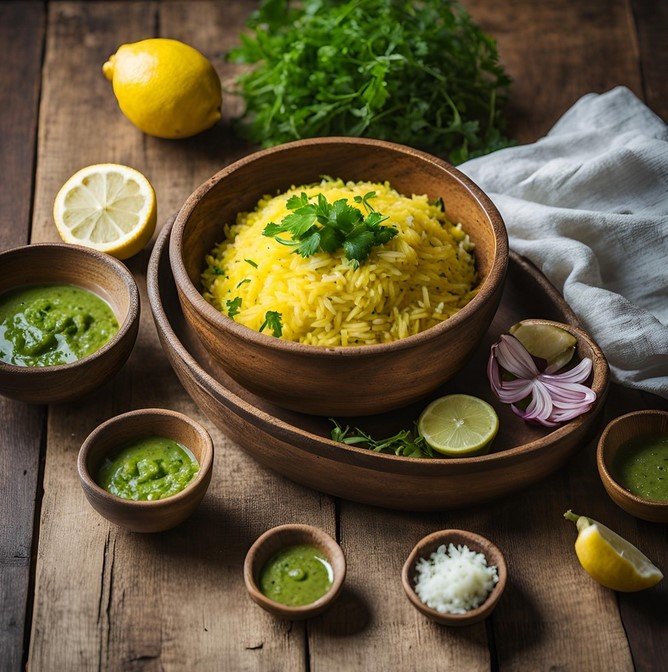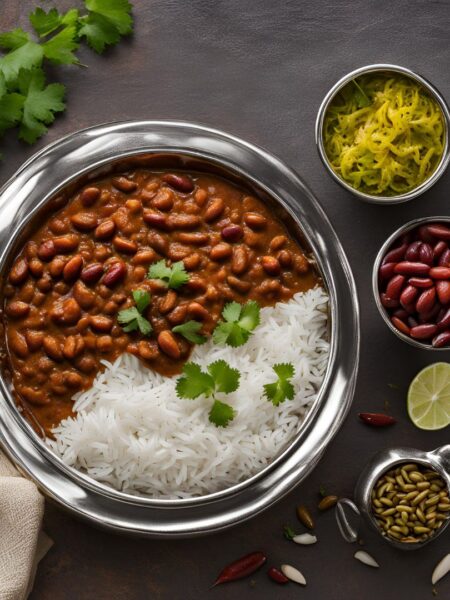Rava Upma Recipe : A Delicious South Indian Breakfast. In the bustling mornings of South India, one dish often stands out as a favorite breakfast staple—Rava Upma. This delectable dish, made primarily from semolina (locally known as rava or sooji), offers a perfect blend of flavors, textures, and nutrition. With its origins deeply rooted in Indian culinary traditions, Rava Upma not only serves as a filling meal but also holds a special place in the hearts of many families.
A Brief History of Upma
The history of Upma is rich and varied, dating back several centuries. Its origins can be traced to South India, where it is commonly prepared in households and served in restaurants. The dish is thought to have evolved from the ancient practice of preparing porridge from grains and pulses, a custom that is still prevalent in many parts of India. The use of semolina as the primary ingredient is believed to have emerged due to its convenience, versatility, and long shelf life.
Traditionally, Upma was considered a dish for the Brahmin community, who valued simplicity and nutrition in their meals. Over time, its popularity spread, transcending regional boundaries and cultural barriers. Today, Upma has become a beloved breakfast item across India and even finds its way onto the menus of restaurants worldwide.
Nutritional Benefits
Rava Upma is not just delicious; it is also a nutritious choice for breakfast. Semolina, the main ingredient, is made from durum wheat, which is high in protein, fiber, and essential vitamins and minerals. It is low in glycemic index, making it suitable for those looking to manage blood sugar levels. The addition of vegetables such as carrots, peas, and beans enhances the nutritional profile, providing essential vitamins, antioxidants, and dietary fiber.
Furthermore, Rava Upma is an excellent source of energy, making it an ideal start to the day. It is light on the stomach, easy to digest, and keeps you feeling full for an extended period. The dish can be easily customized with various vegetables, spices, and herbs, allowing you to tailor it to your taste preferences and nutritional needs.
The Versatility of Upma
One of the remarkable aspects of Rava Upma is its versatility. While the traditional recipe remains a favorite, many variations have emerged over time, catering to different palates and dietary preferences. For instance, some people prefer a spicier version with added green chilies and ginger, while others may opt for a milder taste, emphasizing the natural flavors of the vegetables.
In addition to the classic Upma, creative adaptations include adding ingredients such as peanuts, cashews, or even scrambled eggs for added protein. Some regions have their unique twists, such as using coconut milk for a richer flavor or incorporating local spices and herbs. This adaptability makes Rava Upma an excellent canvas for culinary experimentation, allowing cooks to express their creativity while honoring traditional flavors.
Preparing Rava Upma – Overview
Making Rava Upma is a straightforward process that can be accomplished in just under 30 minutes, making it an ideal choice for busy mornings. Here’s a brief overview of the steps involved in preparing this delicious dish:
- Roasting the Semolina: The first step is to roast the semolina until it turns light golden brown. This process enhances the flavor and prevents the semolina from becoming sticky during cooking.
- Tempering the Spices: In a pan, you start by heating ghee or oil, followed by adding mustard seeds, urad dal, and chana dal. This step infuses the oil with aromatic spices and flavors that form the base of the dish.
- Cooking the Vegetables: Next, you can add a variety of chopped vegetables, such as onions, carrots, and peas. Sautéing the vegetables until they are tender ensures that the flavors meld together beautifully.
- Combining Ingredients: Once the vegetables are cooked, the roasted semolina is added to boiling water along with the sautéed mixture. Stirring continuously prevents lumps from forming and ensures an even texture.
- Final Cooking: After cooking for a few minutes, the dish thickens, and it’s ready to be served. Garnishing with fresh coriander and a squeeze of lemon juice adds a burst of freshness to the final presentation.
Serving Suggestions
Rava Upma is typically served hot, accompanied by various side dishes that enhance its flavor. Coconut chutney is a classic pairing, providing a creamy contrast to the savory upma. Sambar, a lentil-based vegetable stew, is another popular accompaniment that adds a spicy kick. Pickles, yogurt, and even a sprinkle of sev (crispy chickpea noodles) can add crunch and complexity to the meal.
This dish is not limited to breakfast alone; it can be enjoyed as a light lunch or dinner as well. It is often served at special occasions, family gatherings, and festive celebrations, making it a beloved dish that brings people together.
Cultural Significance
In addition to its culinary appeal, Rava Upma holds cultural significance in many households. It is often one of the first dishes taught to children, symbolizing a connection to family traditions and culinary heritage. The act of preparing upma becomes a shared experience, bringing family members together in the kitchen, fostering a sense of community and belonging.
Moreover, Rava Upma is often served during festivals, spiritual gatherings, and community events, highlighting its role in celebrating togetherness. Its simplicity and versatility make it a suitable dish for various occasions, from casual brunches to formal gatherings.
Conclusion
Rava Upma is more than just a breakfast dish; it is a celebration of flavors, nutrition, and cultural heritage. Its rich history, combined with its versatility and ease of preparation, has made it a cherished meal in countless households. Whether you enjoy it plain or with a medley of vegetables, Rava Upma is a dish that resonates with many, making it a timeless classic in Indian cuisine.
As you embark on your journey to prepare this delightful dish, remember that the key to a perfect Rava Upma lies in the balance of flavors and the love infused in its preparation. So gather your ingredients, follow the steps, and savor the deliciousness of Rava Upma—an experience that is sure to brighten your day!
Ingredients for Rava Upma Recipe
- 1 cup semolina (rava)
- 2 tablespoons ghee or oil
- 1 teaspoon mustard seeds
- 1 teaspoon urad dal (split black gram)
- 1 teaspoon chana dal (split chickpeas)
- 1-2 green chilies, finely chopped (adjust to taste)
- 1 teaspoon grated ginger
- 1 medium onion, finely chopped
- 1-2 cups mixed vegetables (carrots, peas, beans, etc., chopped)
- 2 cups water
- Salt to taste
- Fresh coriander leaves for garnish
- 1 tablespoon lemon juice (optional)
Cooking Instructions Rava Upma Recipe
Roast the Semolina:
- In a pan, dry roast the semolina on low to medium heat until it turns light golden and aromatic (about 5-7 minutes). Stir continuously to avoid burning. Remove from the pan and set aside.
Temper the Spices:
- In the same pan, heat ghee or oil over medium heat.
- Add mustard seeds and let them splutter.
- Add urad dal and chana dal, sautéing until they turn golden brown.
- Put-in chopped green chilies and grated ginger, and sauté for a minute.
- Add the chopped onion and cook until it turns translucent.
Cook the Vegetables:
- Add the mixed vegetables and sauté for 3-4 minutes until they are slightly tender.
Add Water and Semolina:
- Pour in 2 cups of water and add salt to taste. Bring the water to a boil.
- Once boiling, reduce the heat to low and slowly add the roasted semolina, stirring continuously to avoid lumps.
Cook the Upma:
- Cook on low heat for 3-5 minutes until the semolina absorbs the water and the mixture thickens. Stir occasionally.
Final Touches:
- Once cooked, turn off the heat and let it sit for a couple of minutes.
- Fluff the upma with a fork, add lemon juice if using, and garnish with fresh coriander leaves.
Serve:
- Serve hot with coconut chutney or pickle on the side.
Total Time Breakdown
- Preparation Time: 10 minutes
- Cooking Time: 15 minutes
- Total Time: 25 minutes
Servings
- Number of Servings: 2-3
Essential Cooking Tips – Rava Upma Recipe
1. Roast the Semolina Properly
Always dry roast the semolina before cooking. This step is crucial as it enhances the flavor and aroma of the rava. Roast it on low to medium heat, stirring continuously to avoid burning. The semolina should turn a light golden color and develop a nutty fragrance. Properly roasted semolina helps prevent the upma from becoming sticky.
2. Use the Right Water Ratio
The general rule for cooking upma is to use a water-to-semolina ratio of 2:1 (2 cups of water for every 1 cup of semolina). However, if you prefer a softer texture, you can add a little more water. It’s essential to bring the water to a boil before adding the semolina to ensure even cooking and prevent lumps.
3. Sauté the Vegetables Thoroughly
When adding vegetables to your upma, sauté them until they are tender and cooked through before adding water. This not only infuses the dish with their flavors but also ensures that the vegetables are well integrated into the upma. You can use a variety of vegetables, such as carrots, peas, beans, and bell peppers, for added nutrition and color.
4. Stir Continuously While Adding Semolina
When you add the roasted semolina to the boiling water, do so slowly while stirring continuously. This prevents lumps from forming and ensures that the semolina is evenly distributed in the water. Use a whisk or a spatula to stir, allowing for a smooth and fluffy upma.
5. Let It Rest Before Serving
Once the upma is cooked, turn off the heat and let it sit covered for a couple of minutes. This resting period allows the semolina to absorb any remaining moisture, resulting in a fluffier texture. Fluff the upma with a fork before serving to enhance its lightness, and garnish with fresh coriander or lemon juice for added flavor.
Some More Interesting Recipes –
- Mutton Dum Biryani Recipe
- Egg Fried Rice Recipe
- Coconut Rice Recipe
- Pudina Rice Recipe : A Refreshing Indian Classic
- Jeera Rice Recipe
- Lemon Rice Recipe
- Chicken Fried Rice Recipe
- Vegetable fried rice Recipe
- Andhra Chicken Biryani Cooking Recipe
- Hyderabadi Chicken Biryani Recipe
- Vegetable Pulao Recipe
- Dal Makhani Recipe
- Aloo Samosa Recipe
- Aloo Capsicum Masala Recipe
- Rajma Masala Recipe
- Pav Bhaji Recipe
- Onion Pakora Recipe
Frequently Asked Questions (FAQs) – Rava Upma Recipe
1. What is Rava Upma?
Rava Upma is a popular South Indian breakfast dish made from roasted semolina (rava or sooji) and cooked with spices, vegetables, and sometimes nuts. It is a savory dish that is light, nutritious, and quick to prepare.
2. Can I make this recipe of Rava Upma without vegetables?
Yes, you can make Rava Upma without vegetables. While vegetables add flavor and nutrition, you can prepare a plain upma by simply following the basic recipe. You can also add spices and herbs for flavor.
3. What types of vegetables can I add to this recipe of Rava Upma?
You can add a variety of vegetables to Rava Upma, such as carrots, peas, beans, bell peppers, and potatoes. Feel free to mix and match based on your preference or what you have on hand.
4. How do I prevent the semolina from becoming sticky in this Rava Upma Recipe ?
To prevent the semolina from becoming sticky, ensure that you roast it properly before cooking. Use the right water-to-semolina ratio (generally 2:1) and stir continuously while adding the semolina to boiling water to avoid lumps.
5. Is this recipe of Rava Upma healthy?
Yes, Rava Upma can be a healthy option as it is made from semolina, which is a good source of carbohydrates and protein. Adding vegetables increases its nutritional value, providing essential vitamins, minerals, and fiber.
6. Can I make Rava Upma in advance using this recipe?
While Rava Upma is best enjoyed fresh, you can prepare it in advance and reheat it. If storing, let it cool completely before refrigerating. When reheating, add a splash of water to help restore its moisture.
7. How can I make Rava Upma spicier with this recipe?
To make Rava Upma spicier, you can add more green chilies, red chili powder, or even black pepper. Additionally, incorporating spices like garam masala or curry leaves can enhance the flavor profile.
8. Can I use roasted semolina available in stores for this Rava Upma Recipe?
Yes, you can use pre-roasted semolina if available. However, roasting it at home enhances the flavor and aroma, so it’s recommended to roast it lightly yourself before use for the best results.
9. What can I serve with Rava Upma?
Rava Upma pairs well with coconut chutney, tomato chutney, or pickle. You can also serve it with a side of yogurt for a refreshing contrast and added creaminess.
10. Is this recipe of Rava Upma suitable for vegetarians and vegans?
Yes, Rava Upma is suitable for both vegetarians and vegans, especially when made with oil instead of ghee. It contains no animal products, making it a versatile dish for various dietary preferences.
Rava Upma Recipe

Ingredients for Rava Upma Recipe
Cooking Instructions ¬ Rava Upma Recipe
Roast the Semolina:
- • In a pan, dry roast the semolina on low to medium heat until it turns light golden and aromatic (about 5-7 minutes). Stir continuously to avoid burning. Remove from the pan and set aside.
Temper the Spices:
- • In the same pan, heat ghee or oil over medium heat.
- • Add mustard seeds and let them splutter.
- • Add urad dal and chana dal, sautéing until they turn golden brown.
- • Put-in chopped green chilies and grated ginger, and sauté for a minute.
- • Add the chopped onion and cook until it turns translucent.
Cook the Vegetables:
- • Add the mixed vegetables and sauté for 3-4 minutes until they are slightly tender.
Add Water and Semolina:
- • Pour in 2 cups of water and add salt to taste. Bring the water to a boil.
- • Once boiling, reduce the heat to low and slowly add the roasted semolina, stirring continuously to avoid lumps.
Cook the Upma:
- • Cook on low heat for 3-5 minutes until the semolina absorbs the water and the mixture thickens. Stir occasionally.
Final Touches:
- • Once cooked, turn off the heat and let it sit for a couple of minutes.
- • Fluff the upma with a fork, add lemon juice if using, and garnish with fresh coriander leaves.
Serve:
- • Serve hot with coconut chutney or pickle on the side.





